Awning & Tent Peg Guide
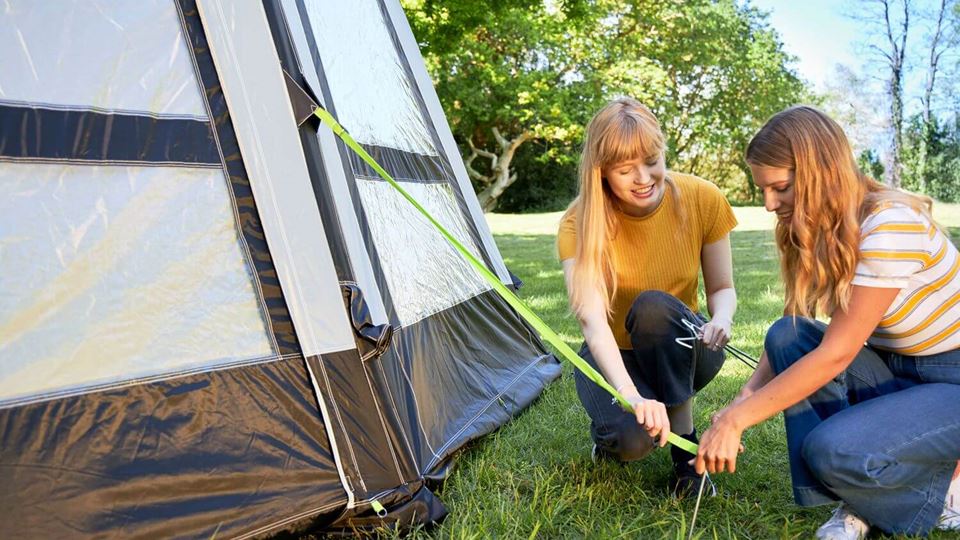
You’ve just purchased your new awning or tent and the time to peg it up as come. Which pegs should you use? Can you use the same pegs for all seasons? Which pegs are the best for you?
Pegs come in many different shapes, sizes and materials all with different purposes.
We will be shedding some light on which peg is likely to be the best for your next trip away so you can enjoy an easy set up. When caravanning or motorhoming, you usually have the choice of hard standing or grass pitches. Choosing a peg for hard standing is not too difficult but when it comes to grass, things can get a little trickier. The weather must always be taken into consideration as this can affect your choice of peg so having different types of pegs is always a sensible choice.
Types of Pegs:
Round Wire Pegs
Ideal for: Medium firm ground such as grass
The most basic but probably most common peg. Made from steel or aluminium, round wire pegs are good for Medium to Firm ground but a nightmare in stony soil as they bend easily.
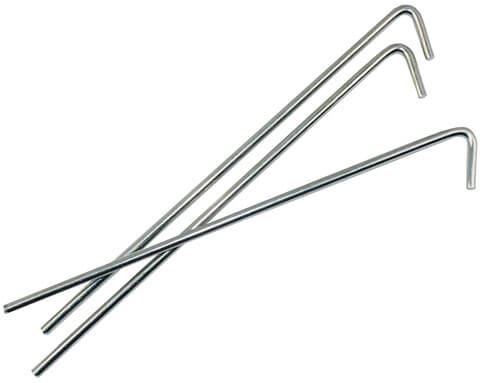
Rock Pegs
Ideal for: Hard rocky ground or hard soil
Rock pegs are great for penetrating harder, stony ground pitches. They have a thicker shaft with a sharp point and plastic head, which is great for hard standing pitches. They can take a good whack with your knocking stick of choice and will not bend when hitting rocks. The stick ability of these pegs is good, providing a secure grip, and can also be used in hard soil. These pegs can vary in length and thickness and don't bend when hitting rocks.
The PRIMA Secure Hold Pegs come with their own robust storage case with an integrated peg brush giving you the perfect storage and cleaning solution in one. These quality 6mm gauge wide steel pegs come with sharpened tips, making them suitable for general use on a variety of ground surfaces especially hard and difficult ground. The tough T shaped head securely holds down guy lines keeping your tent or awning safe and secure.
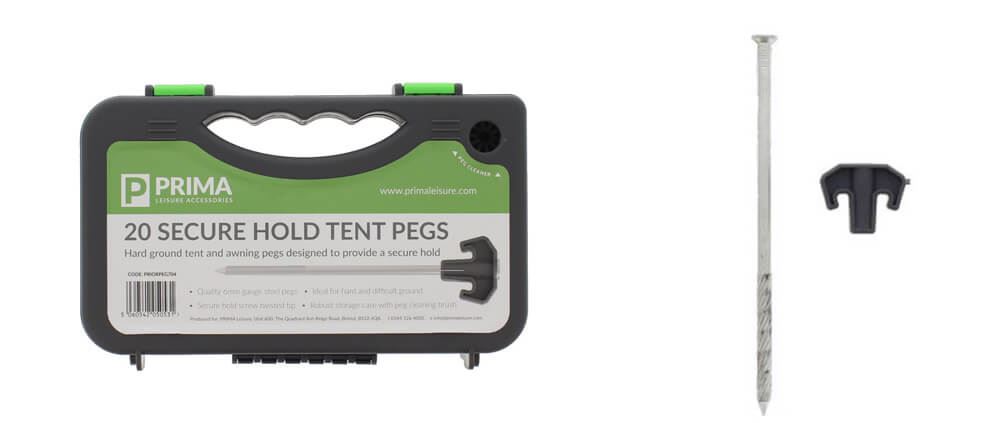
Plastic Pegs
Ideal for: Soft ground - soft soil
The extended profile and therefore increased surface area make for great stick ability in soft soil. As a result, they will be muddy when removed, but are easy wash without worrying about rust. These are great for when the weather has been poor however as they are plastic, they will shatter if used in hard ground.
If you're looking for some plastic pegs, try the PRIMA Soft Ground Pegs. This pack of 10 comes complete with it's own peg holder so when not in use they can be neatly stored and kept together.
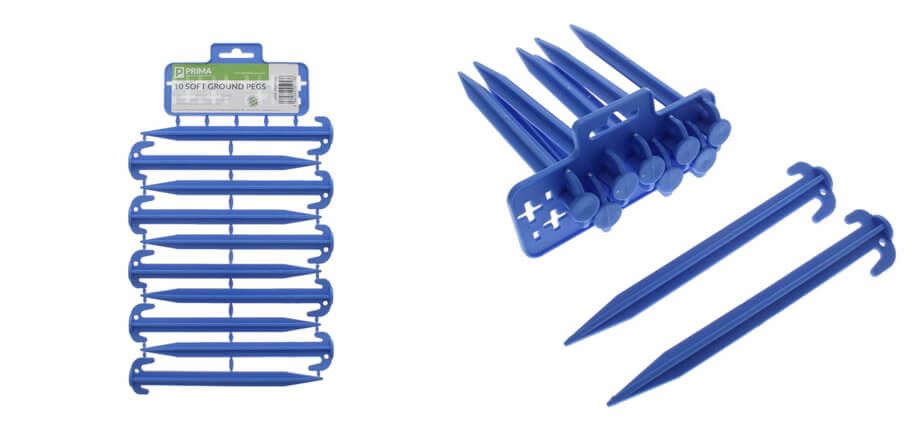
Steel V Shaped Pegs
Ideal for: Most soils on grass pitches or sand
The wide profile is good for offering a secure hold in soft ground. They can be used in soil or sand as they offer more strength than plastic pegs. This is with credit to the fact that steel V shaped pegs do not twist in the ground.
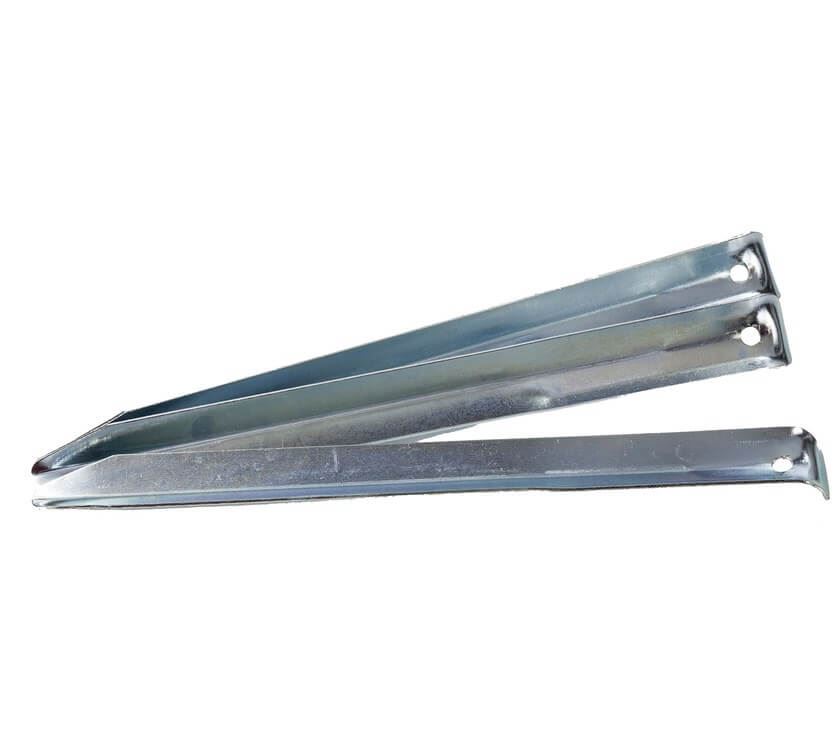
Groundsheet Pegs
Ideal for - soil or hard standing surfaces
Usually shorter in length, these pegs have a dome head and designed to hold groundsheets and carpets in place. They don’t need to be angled and shouldn’t create a trip hazard. Use these to secure your awning carpet or internal mud flaps on your awning. Groundsheet pegs can be plastic or steel, however steel is much more durable and can be used in soil or hard standing surfaces.
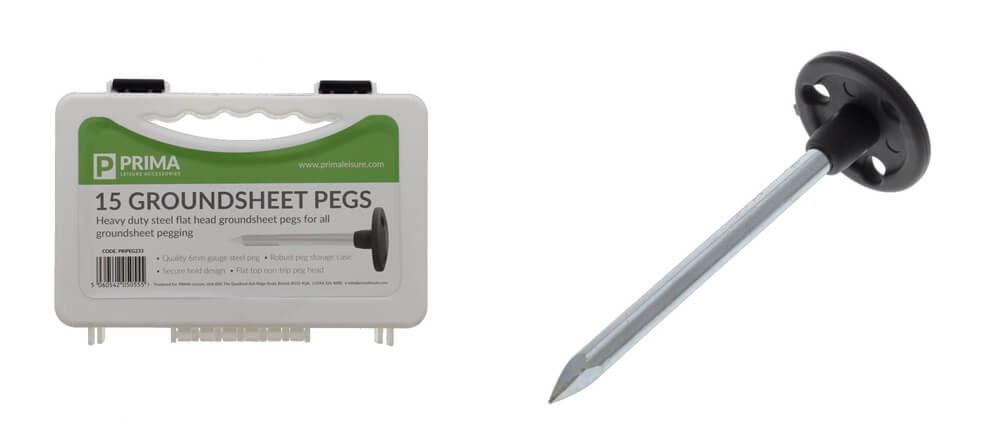
Tools Of The Trade:
Hammers
Obviously, you need something to drive the peg into the ground, which can be a wooden or rubber mallet, a lump hammer or a claw hammer it really depends on the peg type. We tend to opt for a rubber mallet, it has enough weight behind it to give the peg a good thumping but not so harsh that it would shatter a plastic peg.
Drill
Some peg types you can screw into the ground, in which case having a drill with you is super handy. Taking a spare battery or the charger is also a useful. Screw in pegs can really take the hard work out of securing your awning or tent.
Removal Tools
A peg puller is super useful for removing pegs and saves you bending another peg (whilst trying to pull out a hard-stuck peg) or getting your hands filthy.
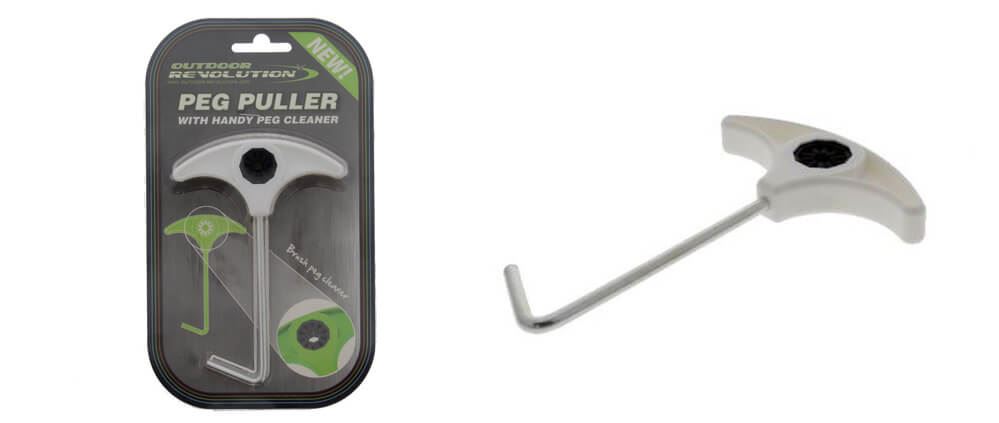
Top Tips
Angle those pegs
Rather than hitting your pegs straight into the ground, make sure they go in at a 45-degree angle. By creating an angle, you give the peg more holding power. Remember to drive each peg all the way into the ground too.
Don’t be a fool
We’ve all been there and done it, hit a peg into the ground only to suddenly hit a stone. Don’t be a hero, you won’t push that submerged lump of unseen rock down into the compacted earth. Swallow your pride, remove it, and try again in a slightly different place.
Removing a hard-stuck peg
Removing hard-stuck pegs can be a problem during a summer dry spell or in the winter if the ground has suffered from freeze thaw several times over. In each case, pour a cup of water (warm in winter) around the peg hole and leave for 5 minutes. Then try again.
Mix and match
You can mix and match pegs to suit various conditions. This will help give extra strength to pegging points that need it helping secure the tents key structural points.

That is a quick round up of the different types of pegs you can use when pegging down an awning or tent. So now you can always be prepared and ready to keep you awning or tent secure throughout various weather conditions.
Happy touring!
